Introduction
The vibrant red canary bird has captivated bird enthusiasts for generations with its stunning plumage and melodious songs. These beautiful avian companions, a color variation of the domestic canary (Serinus canaria domestica), require attentive care to ensure they remain healthy and content. Despite your best efforts, you might notice your red canary bird showing signs of distress or unhappiness. Understanding the needs of your red canary is essential for providing optimal care and ensuring a harmonious relationship with your feathered friend.
In this comprehensive guide, we’ll explore the five most common reasons why your red canary bird might not be happy, along with practical solutions to address these issues. Whether you’re a new red canary owner or have years of experience with canary bird species, this article will provide valuable insights into red canary care and help you create the ideal environment for your beloved pet.
Understanding Red Canary Birds
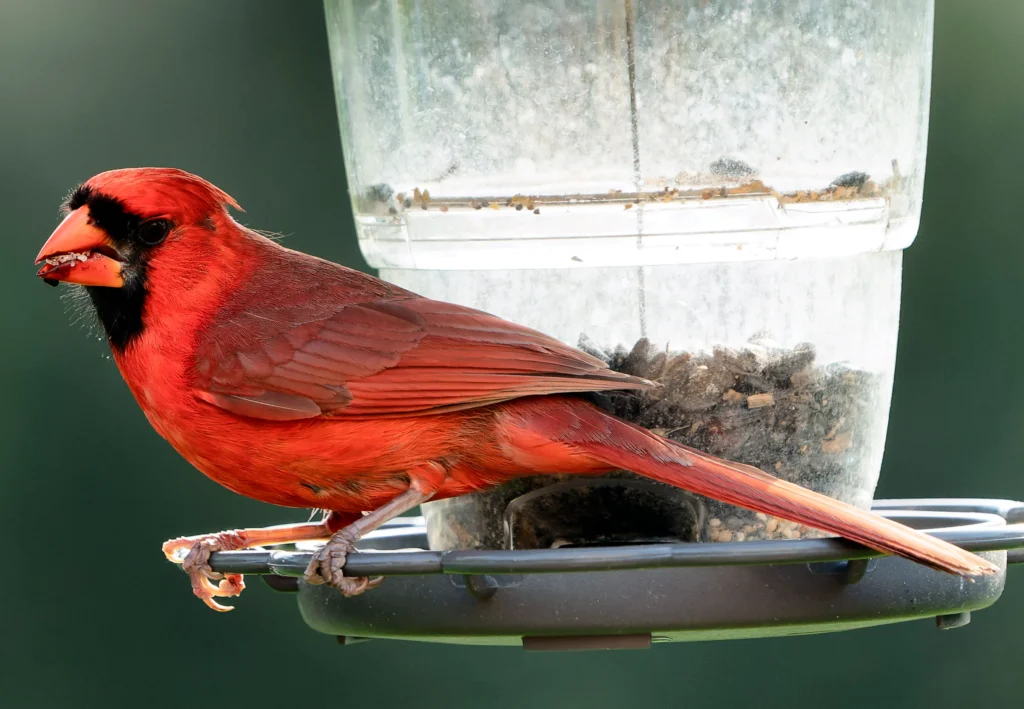
Before diving into the reasons for unhappiness, it’s important to understand what makes red canary birds unique. The red canary is not naturally occurring in the wild but is the result of careful breeding and selection. The distinctive red plumage of the red canary bird comes from selective breeding programs that introduced genes from red siskins to domestic yellow canaries.
The red canary’s vibrant color makes it one of the most sought-after canary bird colors in the avian pet world. While many aspects of red canary care are similar to other canary bird species, their specific genetic makeup may predispose them to certain health issues and behavioral patterns.
Red canaries typically have a canary bird lifespan of 10-15 years when properly cared for, making them a long-term commitment for pet owners. Their longevity depends greatly on diet, environment, and preventative health care. Understanding the specific needs of your red canary will help ensure it remains a happy, healthy companion throughout its life.
Reason 1: Improper Diet and Nutrition
One of the most common reasons your red canary bird might appear unhappy is an improper or insufficient diet. Nutrition plays a crucial role in maintaining the vibrant color, energy levels, and overall health of your red canary.
Signs of Nutritional Problems in Red Canaries
- Dull or faded feather coloration
- Lethargy or decreased activity
- Weight loss or gain
- Reduced singing
- Abnormal droppings
- Feather plucking or poor feather quality
The Ideal Red Canary Diet
A balanced red canary diet should consist of:
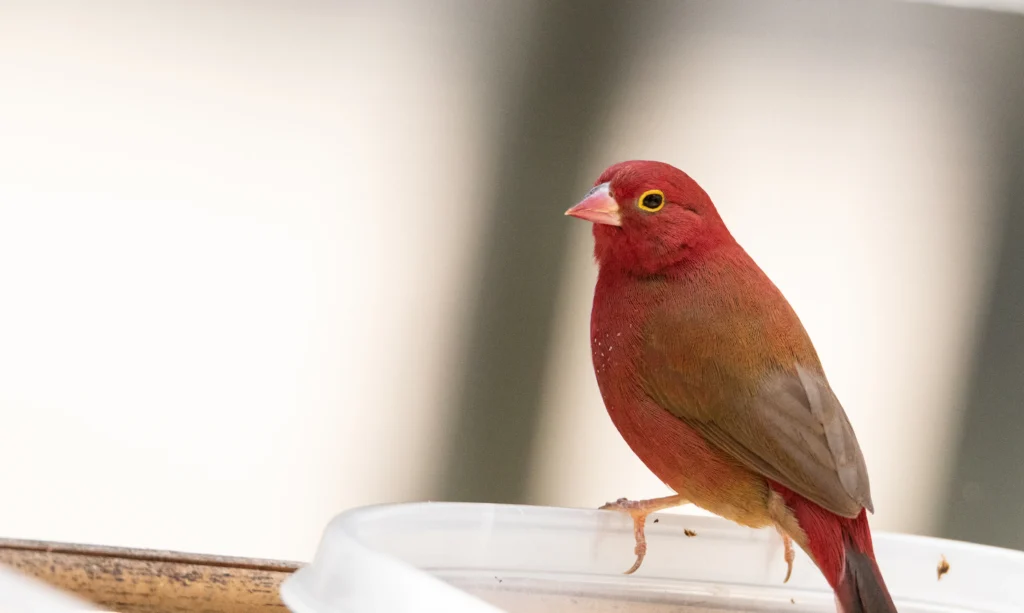
- High-quality canary seed mix: The foundation of your red canary’s diet should be a premium seed mix specifically formulated for canaries. Look for mixes containing canary grass seed, nyjer seed, and millet.
- Fresh fruits and vegetables: Red canaries benefit from daily servings of fresh produce such as grated carrots, apple slices, leafy greens, and broccoli. These provide essential vitamins and antioxidants that help maintain their vibrant red coloration.
- Color-enhancing supplements: Special supplements containing natural carotenoids can help maintain the brilliant red plumage of your canary bird. These are particularly important during molting periods.
- Cuttlebone and mineral blocks: These provide essential calcium and minerals while helping your red canary keep its beak trimmed.
- Fresh water: Always ensure your red canary has access to clean, fresh water, changed daily.
Many red canary health issues stem from nutritional deficiencies. For example, insufficient vitamin A can lead to respiratory problems, while inadequate calcium may cause egg-binding in female birds. By providing a diverse and nutritionally complete diet, you can prevent many common health problems and ensure your red canary maintains its beautiful coloration and cheerful disposition.
If you notice a sudden change in your red canary’s eating habits or physical appearance, consult an avian veterinarian promptly. Sometimes dietary adjustments alone can dramatically improve your bird’s mood and health.
For more detailed information on canary nutrition, check out our complete guide to canary bird feeding on our website.
Reason 2: Inadequate Housing and Environment
The housing and environment you provide for your red canary bird significantly impact its happiness and well-being. In the wild, canaries are active birds that fly freely through open spaces. When kept as pets, they require appropriate cages and environmental conditions that mimic aspects of their natural red canary habitat.
Signs of Housing Problems
- Excessive pacing or fluttering against cage walls
- Feather damage from rubbing against cage bars
- Decreased singing or increased distress calls
- Lethargy or depression
- Stereotypic behaviors (repetitive, seemingly purposeless movements)
Creating the Ideal Environment for Your Red Canary
Cage Size and Placement
Your red canary bird needs a spacious cage that allows for flight and exercise. The minimum recommended dimensions are 20 inches long, 12 inches wide, and 18 inches high, though larger is always better. The cage should be placed:
- Away from drafts, direct sunlight, and extreme temperature fluctuations
- In a room with regular human activity, but not constantly noisy
- At eye level or slightly higher to provide security
- Away from kitchens (cooking fumes can be toxic to red canaries)
Cage Setup and Accessories
Properly equipping your red canary’s cage includes:
- Multiple perches of varying diameters and materials
- Food and water dishes placed to avoid contamination
- Appropriate toys that encourage natural behaviors
- A secure area where your red canary can retreat when feeling threatened
- A shallow bathing dish (canaries enjoy bathing regularly)
Climate Considerations
Red canaries are sensitive to temperature extremes. Maintain a consistent temperature between 65-75°F (18-24°C) and moderate humidity (around 40-60%). Avoid placing the cage near air conditioners, heaters, or in areas with tobacco smoke or strong chemical odors.
Out-of-Cage Time
While not all red canaries enjoy handling, many benefit from supervised time outside their cage in a safe, bird-proofed room. This freedom provides essential exercise and mental stimulation. Before allowing out-of-cage time, ensure:
- All windows and doors are closed
- Ceiling fans are off
- No other pets are present
- Toxic plants and household chemicals are removed
- Mirrors and glass surfaces are covered to prevent collisions
If your red canary appears unhappy despite having an appropriate cage, consider adding natural elements like small branches or safe plants near the cage to create a more nature-like environment. Many red canary owners report improved mood and increased singing when their birds have visual access to greenery.
For more tips on creating the perfect environment for your canary, visit our canary cage setup guide for detailed recommendations.
Reason 3: Health Issues and Illness
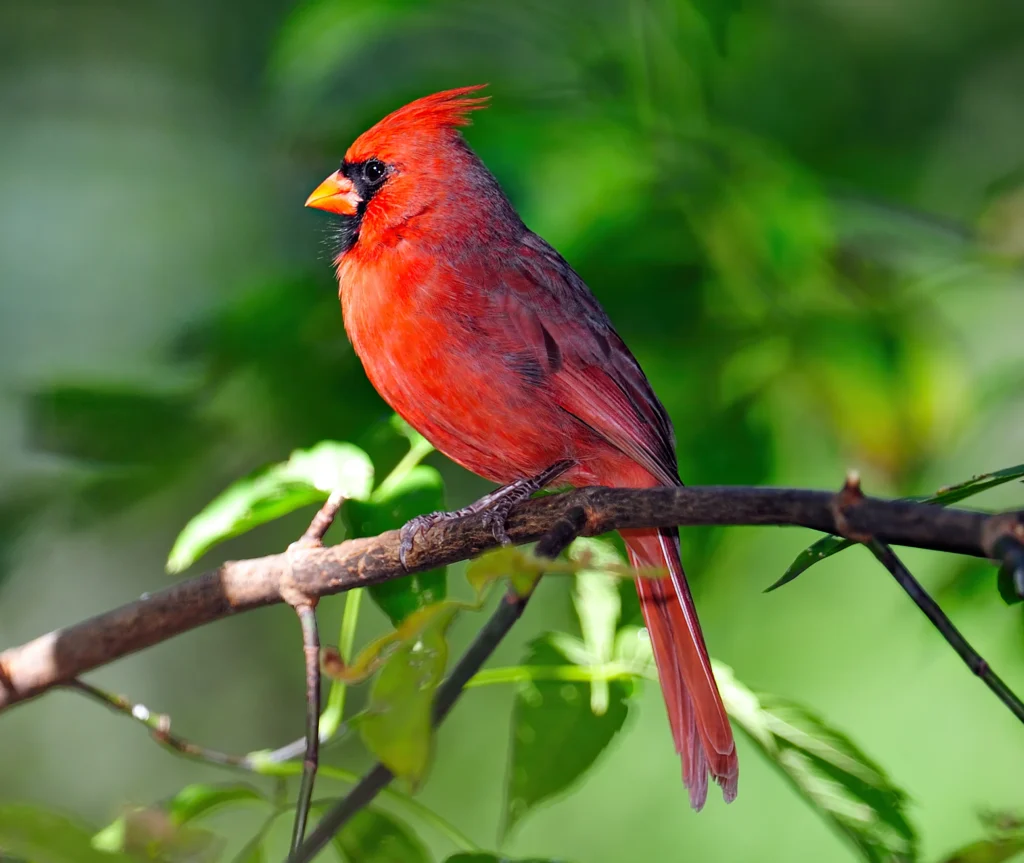
Red canaries, like all living creatures, can experience various health problems that affect their behavior and happiness. Recognizing the signs of illness early is crucial for successful treatment and recovery. Red canary health issues can manifest in subtle ways before becoming severe.
Common Signs of Illness in Red Canaries
- Reduced or absent singing
- Fluffed-up feathers (especially during the day)
- Sleeping more than usual
- Changes in droppings (consistency, color, or volume)
- Decreased appetite
- Difficulty breathing or tail bobbing
- Discharge from eyes or nostrils
- Balance problems or unusual posture
- Weight loss
Common Red Canary Health Issues
Respiratory Infections
Red canaries are particularly susceptible to respiratory problems, which can be caused by drafts, poor ventilation, or bacterial/viral infections. Symptoms include wheezing, open-mouth breathing, and nasal discharge. Prompt veterinary care is essential, as respiratory infections can quickly become life-threatening.
Parasites
External parasites (mites and lice) and internal parasites (worms) can cause significant discomfort for your red canary bird. Regular inspection of your bird’s skin, feathers, and droppings can help detect parasite problems early.
Nutritional Disorders
Vitamin A deficiency, calcium imbalances, and other nutritional problems can lead to serious health issues in red canaries. These often develop gradually and may not be obvious until they’ve become severe.
Reproductive Issues
Female red canaries can experience egg binding or other reproductive problems, especially if they lack sufficient calcium or are breeding out of season.
Stress-Related Illnesses
Chronic stress can suppress your red canary’s immune system, making it more susceptible to various diseases. Causes of stress include frequent handling, cage relocations, presence of predators (including household pets), and overcrowding.
Preventative Health Care for Red Canaries
- Regular check-ups: Even healthy red canaries should see an avian veterinarian annually.
- Proper hygiene: Clean and disinfect cage accessories regularly, change food and water daily, and provide clean bathing water.
- Quarantine new birds: If introducing another canary bird to your household, keep it separated for 30-45 days to prevent potential disease transmission.
- Weight monitoring: Regular weighing (using a small digital scale) can help detect health problems before other symptoms appear.
- Nail and beak care: Monitor the length of your red canary’s nails and beak, as overgrowth can cause discomfort and affect feeding.
If you notice any signs of illness in your red canary, consult an avian veterinarian immediately. For minor issues, our canary bird health troubleshooting guide provides useful information while you arrange a veterinary visit.
Reason 4: Social Needs and Loneliness
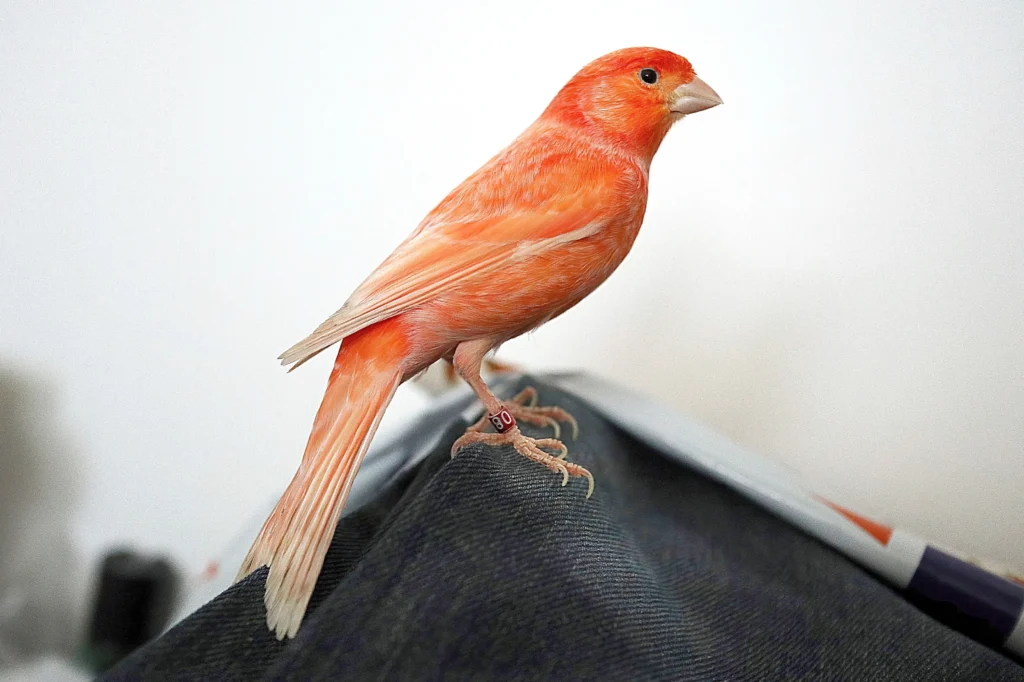
While not as social as some other birds, red canaries are still flock animals by nature. In the wild, canary bird species live in groups, providing companionship, security, and social interaction. In captivity, a lone red canary bird might experience loneliness or boredom, leading to unhappiness and associated behavioral issues.
Signs of Loneliness in Red Canaries
- Decreased singing or unusual vocalizations
- Excessive sleeping
- Self-destructive behaviors like feather plucking
- Aggression toward mirrors or toys
- Depression-like symptoms (lethargy, reduced appetite)
- Excessive attention-seeking when you’re near the cage
Addressing Your Red Canary’s Social Needs
Should You Get Another red canary Bird?
Many red canary owners wonder if they should get a companion for their bird. This depends on several factors:
- Gender considerations: Two male red canaries will likely become territorial and aggressive toward each other. A male-female pair may lead to breeding, which brings additional responsibilities. Two females typically get along better than two males.
- Cage size: If you decide to house multiple canaries together, you’ll need a significantly larger cage—at least twice the size recommended for a single bird.
- Introduction period: New birds should be quarantined and then introduced gradually to prevent stress and aggression.
- Individual personality: Some red canaries prefer solitude and may become stressed by the presence of another bird.
Alternative Social Solutions
If adding another canary isn’t feasible, you can meet your red canary’s social needs through:
- Increased interaction: Spend time near your red canary’s cage, talking softly and moving slowly. While most canaries don’t enjoy handling, they appreciate human presence and interaction.
- Strategic cage placement: Position the cage in a family room or area where your red canary can observe household activities without being overwhelmed.
- Visual stimulation: Place a small mirror in the cage (but remove it if your bird becomes obsessed or aggressive toward it). Some red canary owners place their bird’s cage near a window with a red canary bird feeder outside, providing entertainment and stimulation.
- Audio companionship: Playing recordings of canary bird songs can provide auditory enrichment. Many red canary owners report that their birds sing more when they hear recordings of other canaries.
- Consistent routine: Red canaries appreciate predictability. Maintain consistent feeding times and interaction periods to provide security and reduce stress.
For more insights on canary socialization, check out our detailed article on understanding canary bird behavior on our website.
Reason 5: Lack of Mental Stimulation and Exercise
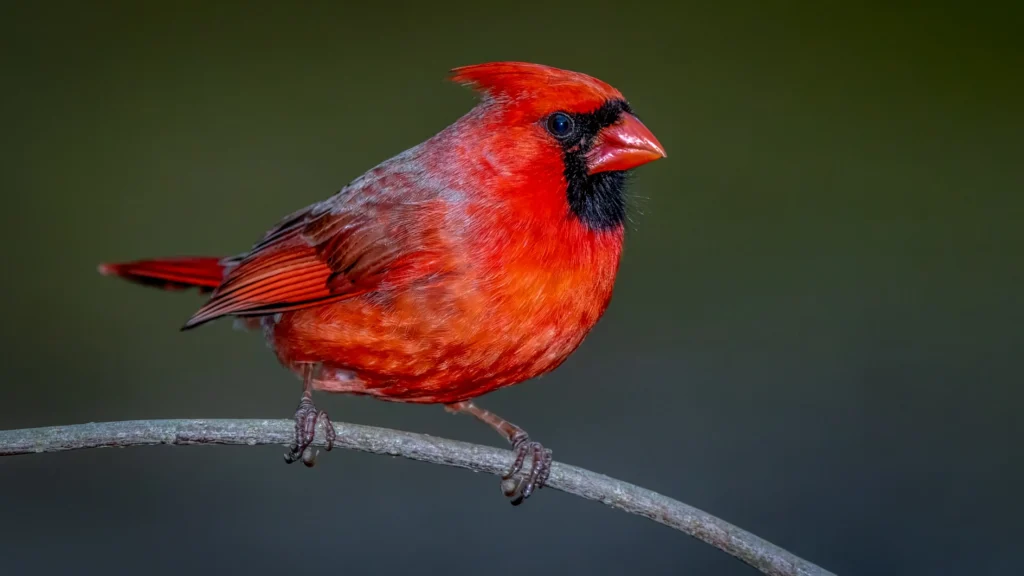
In their natural habitat, red canaries spend hours foraging, exploring, and engaging in various activities. In captivity, boredom and insufficient exercise can lead to unhappiness, health issues, and behavioral problems. Your red canary bird needs regular mental and physical stimulation to thrive.
Signs of Boredom in Red Canaries
- Stereotypic behaviors (repetitive movements with no apparent purpose)
- Excessive sleeping during daylight hours
- Decreased singing or interaction
- Feather plucking or self-mutilation
- Aggression toward toys or cage accessories
- Overexcitement when anything new is introduced
Providing Mental Stimulation for Your Red Canary
Toys and Enrichment Items
The right toys can significantly improve your red canary’s quality of life:
- Foraging toys: Hide small treats in specially designed toys to encourage natural foraging behaviors.
- Swings and ladders: These provide physical exercise and entertainment. Choose appropriately sized options specifically designed for canaries.
- Bells and noise-making toys: Many red canaries enjoy interactive toys that produce sounds in response to their movements.
- Shredding toys: Natural materials like palm leaves or paper that can be safely shredded satisfy natural behaviors.
- Rotation system: Prevent habituation by rotating toys weekly, keeping only 3-4 in the cage at once.
Training Opportunities
While red canaries aren’t known for trick training like some larger parrots, red canary bird training is still possible to a degree:
- Target training: Teaching your red canary to touch a small stick or perch can be the foundation for other behaviors.
- Step-up training: With patience, some red canaries can be taught to step onto a perch or finger.
- Music training: Play the same gentle music during positive experiences to create positive associations.
Remember that training should always be positive and respect your red canary’s natural behaviors and limitations. Never force interaction if your red canary bird appears stressed.
Environmental Enrichment
Simple changes to your red canary’s environment can provide significant stimulation:
- Natural branches: Replace some standard perches with sanitized natural branches of varying diameters.
- Safe plants: Place bird-safe potted plants near (but not in) the cage to create a more natural visual environment.
- Varied food presentation: Occasionally present food in different ways, such as attaching leafy greens to the cage sides or placing seed in different containers.
- Light exposure: Ensure your red canary receives appropriate light cycles with access to indirect natural light when possible.
For more enrichment ideas specific to canaries, visit our article on creative ways to entertain your canary for inspiration.
Special Considerations for Red Canaries
The red canary has some unique characteristics that differentiate it from other red canary bird colors and may impact its care requirements:
Color Maintenance in Red Canaries
The vibrant red plumage that makes the red canary so desirable requires special dietary consideration. Unlike yellow canaries, which maintain their color naturally, red canaries need carotenoid-rich foods to preserve their distinctive coloration. Without these, a red canary may molt into a significantly paler version of its former self, which can disappoint owners unfamiliar with this aspect of red canary care.
Breeding Red Canaries
Breeding red canaries is a specialized hobby that requires significant knowledge and preparation. If you’re considering breeding, be aware that:
- Color genetics in red canaries are complex
- Breeding pairs require special nutritional support
- The process can be stressful for the red birds if conditions aren’t optimal
- Young red canaries require specialized care
Red Canary vs Yellow Canary: Temperament Differences
While individual personality varies greatly, some breeders and enthusiasts report slight temperamental differences between red and yellow canaries:
- Red canaries may be slightly more sensitive to environmental changes
- Some red canaries may be less vocal than their yellow counterparts
- Red canaries might require more dietary attention to maintain optimal health
If you’re comparing red canary bird colors for potential pets, consider these subtle differences alongside the more obvious visual distinctions.
Conclusion
Your red canary bird is a delicate, intelligent creature with specific needs that must be met for it to thrive in captivity. By addressing the five key areas we’ve discussed—proper diet, appropriate housing, health monitoring, social needs, and mental stimulation—you can create an environment where your red canary will flourish.
Remember that each red canary bird has a unique personality, and part of the joy of canary ownership is discovering your bird’s individual preferences and behaviors. Take time to observe your feathered friend, noting how it responds to different foods, toys, and interactions. This attentiveness will help you build a stronger bond with your red canary and quickly identify when something might be amiss.
If you’re new to red canary ownership or facing challenges with your bird’s behavior, don’t hesitate to seek advice from avian veterinarians, experienced breeders, or reputable red canary bird societies. With proper care and attention, your red canary can live a long, healthy life filled with beautiful songs and vibrant plumage.
For more detailed information on specific aspects of red canary care, explore our other canary-related articles on PetsMemes.com, where we cover everything from red canary bird species identification to advanced breeding techniques.
FAQs About Red Canary Birds
How much does a red canary cost?
The red canary price varies depending on the intensity of color, lineage, age, and where you purchase the bird. Generally, you can expect to pay between $100-$300 for a quality red canary from a reputable breeder. Show-quality birds with exceptional color or song may command higher prices.
How long do red canaries live?
With proper care, the average red canary bird lifespan is 10-15 years, with red canaries typically falling within this range. Some exceptionally well-cared-for birds have been known to live up to 20 years.
Do red canaries sing as well as yellow canaries?
Male red canaries are capable of the same beautiful songs as their yellow counterparts. However, singing ability varies by individual and depends more on the specific song lineage of the bird than its color. Female red canaries generally do not sing elaborate songs, regardless of color.
Where can I find red canary pictures to identify color variations?
Many specialized canary websites offer galleries of red canary pictures showing different shades and intensities. Additionally, reputable breeders usually provide photographs of available birds. The American Canary Breeders Association also maintains visual standards for different color varieties.
Are red canaries good for beginners?
Red canaries can make excellent pets for beginners, though they do require slightly more dietary attention than yellow canaries to maintain their color. New owners should thoroughly research red canary care requirements and be prepared to provide appropriate diet, housing, and health care.
Where can I find a red canary for sale?
When looking for a red canary for sale, consider these options:
- Specialized bird shops with knowledgeable staff
- Reputable breeders who focus on canaries
- Canary and finch clubs or associations
- Bird shows and exhibitions
- Rescue organizations (though red canaries are less commonly available for rescue than some other canary colors)
Always check the health and conditions of any facility before purchasing a bird, and ask questions about the bird’s age, diet, and breeding.
How can I tell if my red canary is male or female?
Determining gender in red canaries can be challenging, especially for novices. Generally:
- Males sing elaborate songs, while females typically chirp
- Males often have a more intense red coloration
- Males may display a more pronounced “singing posture”
- Behavioral differences become more apparent during breeding season
For definitive gender identification, consult with an experienced breeder or avian veterinarian.
References and Further Reading
- American Canary Breeders Association. (2023). Standards for Exhibition Canaries. www.acba.org
- Johnson, M. (2024). Complete Care Guide for Red Factor Canaries. Journal of Avian Medicine, 28(3), 145-157.
- Peterson, R. (2023). Nutrition and Color Maintenance in Red Canaries. Avian Health Quarterly, 15(2), 78-92.
- Williams, S. (2024). Environmental Enrichment for Captive Songbirds. Journal of Companion Bird Behavior, 19(4), 203-218.
- Thompson, K. (2023). Behavioral Indicators of Health and Welfare in Canaries. International Journal of Avian Science, 42(1), 56-71.
- National Canary Association. (2024). Canary Care Standards and Best Practices. www.nationalcanaryassociation.org
- Cornell Laboratory of Ornithology. (2023). Canary Origins and Domestication. www.birds.cornell.edu
- Martinez, L. (2024). Genetic Factors in Red Canary Color Production. Avian Genetics Review, 31(2), 112-125.


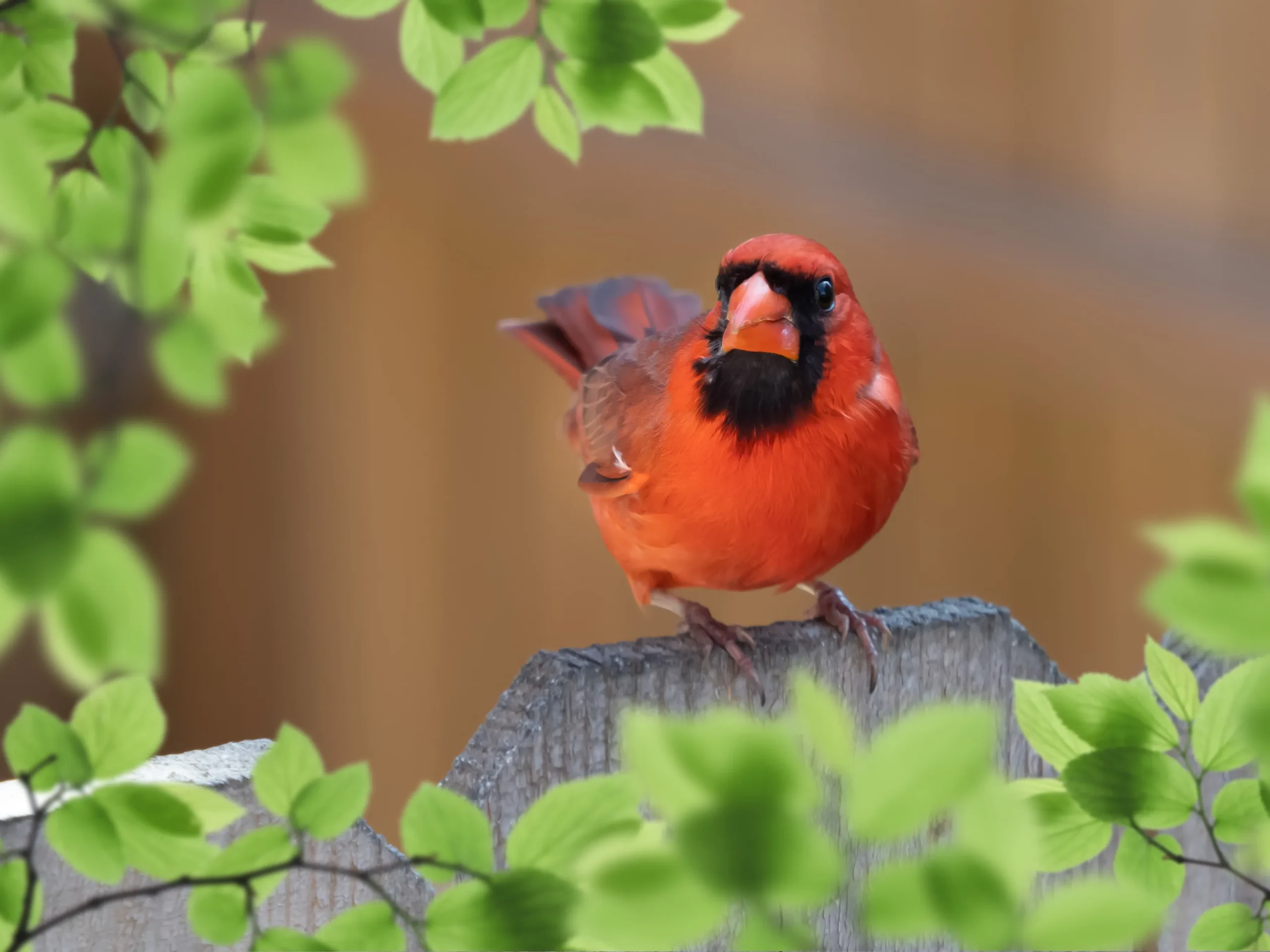
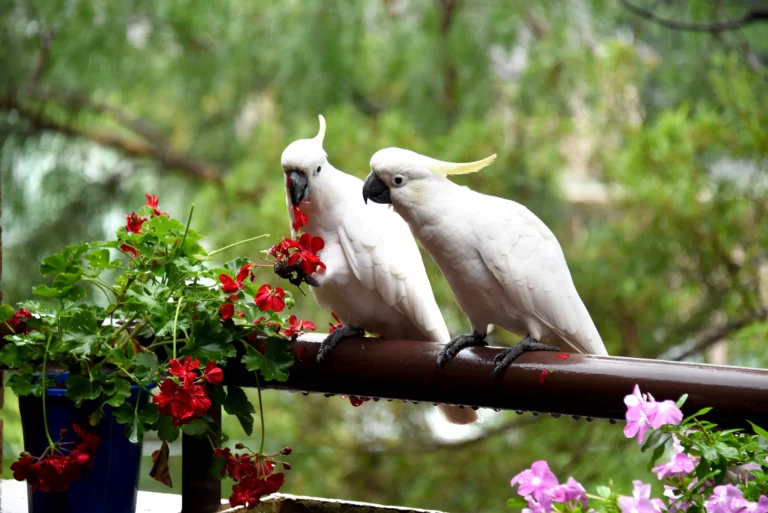

Leave a Comment